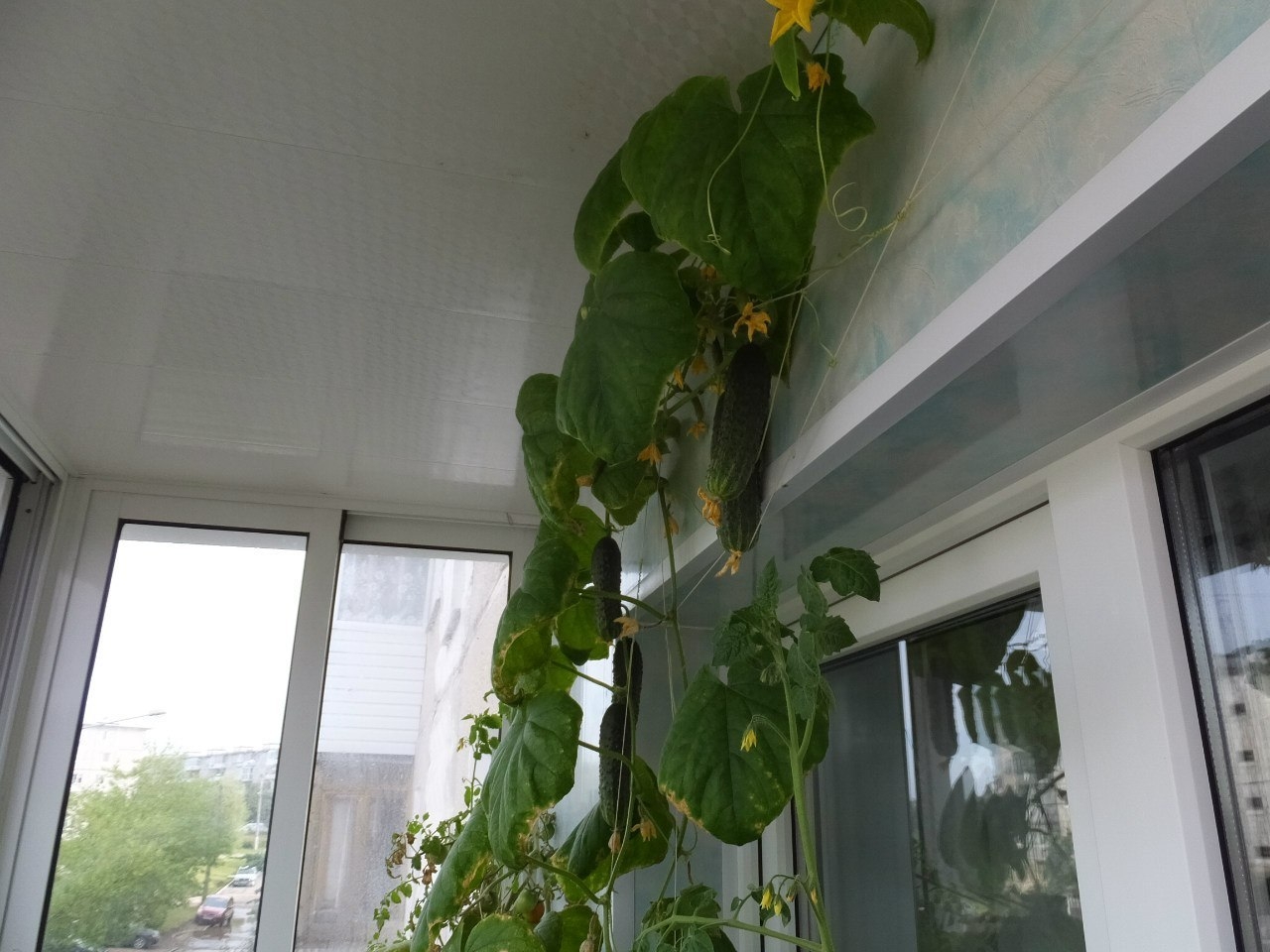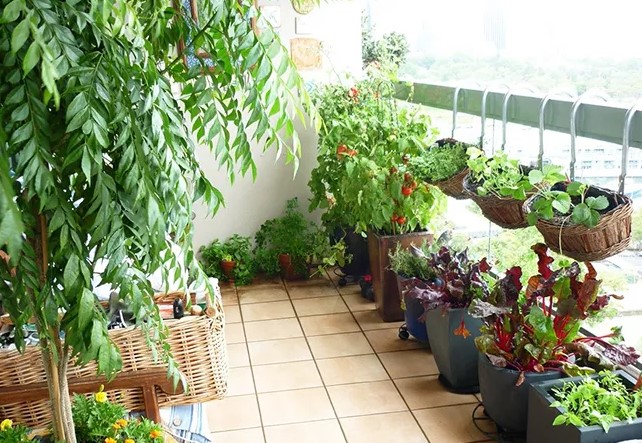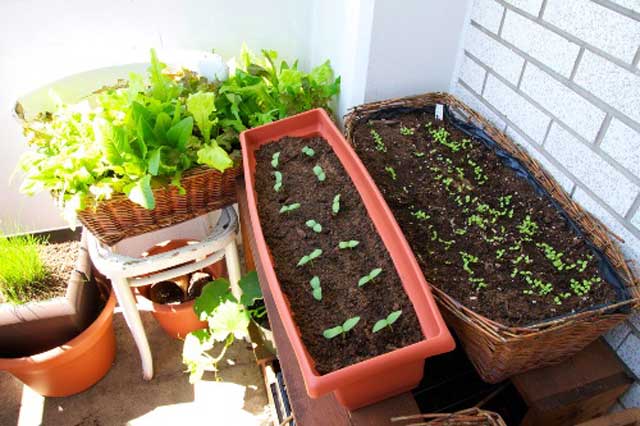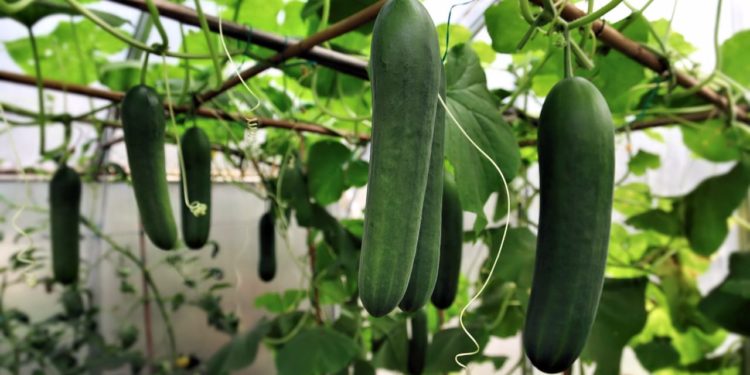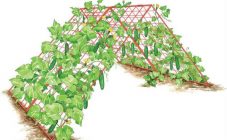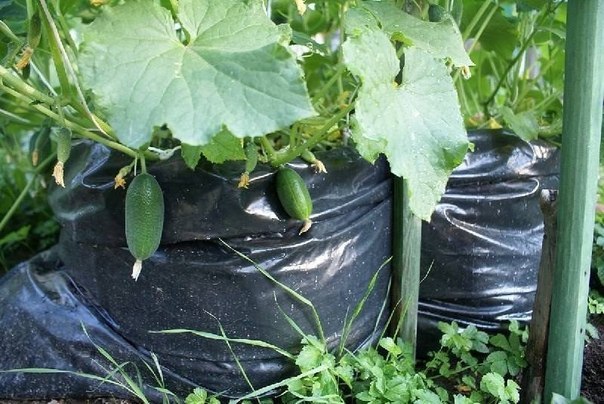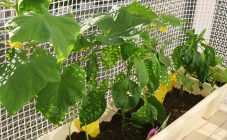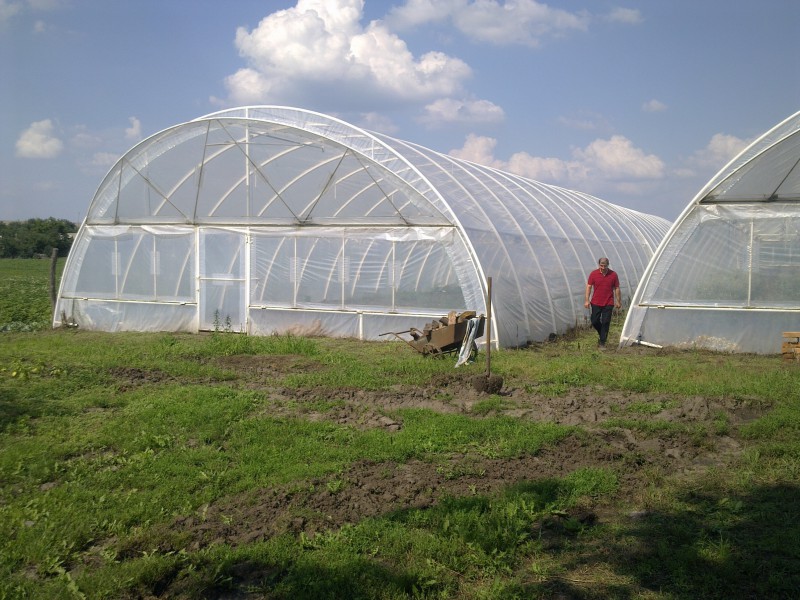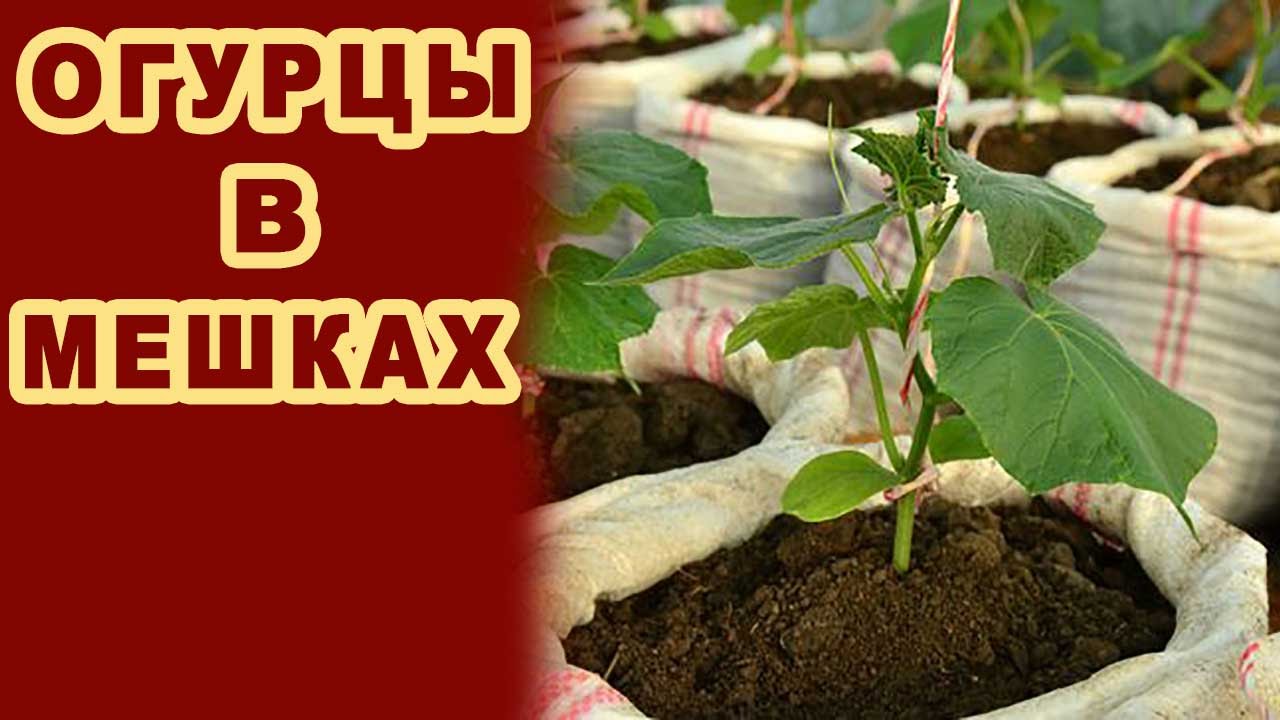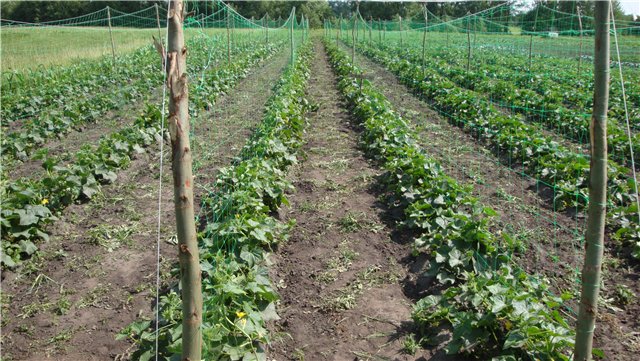Content:
Growing cucumbers on the balcony is a procedure that requires compliance with certain rules. Many are trying to master it in order to enjoy their own grown fruits all year round. Anyone can arrange a mini-greenhouse on a loggia or balcony. The main thing is to know how to do it correctly.
On which balcony can the crop be grown?
Cucumbers will grow best of all on a balcony or loggia facing south. This allows you to grow the crop at any time of the year. However, you can also use a balcony facing the north side, but in this case you will have to equip a greenhouse or greenhouse.
For cucumbers to actively grow and develop, it is necessary to provide them with a comfortable temperature and plenty of light.
Suitable varieties
To grow cucumbers indoors, you need to choose parthenocarpic varieties. The fact is that they will bear fruit regardless of insects. In addition, you need to choose such varieties of cucumbers, which will bring a rich harvest not from a square meter of planting, but from a bush. These varieties include Debut, Masha and others.
On a note! Experienced gardeners recommend stopping their choice not on varietal cucumbers, but on hybrids. This is due to the fact that in most cases they do not need pollination of bees and are characterized by a predominantly female type of flowering. Thanks to this, you can get a bountiful harvest even when growing crops on the balcony.
Suitable conditions
To get a good harvest of cucumbers when growing a crop on the balcony, it is important to provide the plant with a suitable temperature and sufficient light.
Lighting
If the balcony faces south, then usually there are no problems with lighting. In this case, the cucumbers are getting enough sunlight. If it faces the north side, then an additional light source will be required. It is recommended to use special lamps for greenhouses. Their use is also relevant for the southern side in cloudy weather and at night. It is recommended to leave such lamps working overnight.
Temperature
The optimum temperature for plant growth is from +18 to +220C heat. Such indicators do not persist in winter, even if the balcony is glazed. It is recommended to insulate the room to ensure a suitable temperature. If possible, you can also use additional heat sources.
Cultivation rules
To get a high-quality harvest when growing cucumbers on the balcony, you need to follow certain rules, which will be described below.
Choice of containers
For growing cucumbers on a loggia or balcony, it is recommended to use a container with a double bottom. This is due to the fact that the culture needs private irrigation. In this case, water should not be retained in the ground for a long time in order to avoid waterlogging. That is why you need to use this type of container. Excess moisture will "go" into the pallet without being retained in the soil.
You can buy such a container in specialized stores. When buying, it should be noted that to grow one plant, you need to use a container with a volume of 4-5 liters.
You can also use large plastic bottles made of dark material. In this case, holes should be made in the bottom of the container for the drain of excess liquid.
Attention! It is not recommended to use metal containers for growing cucumbers.
Processing and germination of seeds
In order to properly process and germinate seeds, it is recommended to adhere to the following instructions:
- soak the seeds in a weak warm solution of potassium permanganate for a few minutes;
- after the specified time, drain the liquid;
- take cheesecloth, roll it up in several layers, pour it with warm water and lay the planting material on top;
- process the container for seedlings with a solution of potassium permanganate to prevent the appearance of various pathologies in the culture;
- after the emergence of sprouts, which usually occurs 2 days after the procedure, plant the raw materials in the ground in small containers or pots, deepening by 1-2 cm;
- cover the container with a film and leave it like that until sprouts appear, then remove it;
- maintain the air temperature in the room + 22-250FROM;
- ensure regular irrigation of the planting material with warm water - the procedure is recommended to be carried out every other day or every day if the air on the balcony is too dry.
On a note! After growing seedlings, the bushes can be transplanted into containers, where the culture will be permanently located.
Soil preparation
Soil preparation is an important step in growing cucumbers on the balcony. The quality of the soil depends on how the culture will grow and develop, and, consequently, the yield of the plant.
There are several options for the composition of the soil for cucumbers. This allows you to select the most suitable raw material.
Method 1
To prepare this mixture, you will need the following products:
- sod soil;
- peat;
- ash;
- sawdust;
- compost.
You don't have to make such a product yourself. You can buy ready-made cucumber potting soil at your local specialty store.
Method 2
To prepare soil for culture in this way, you will need the same products as in the previous version, but the following components must be added to them:
- urea - 10 g;
- nitrophoska - 15 g.
This amount is enough for a bucket of mixture. The components must be thoroughly mixed and distributed in the seedling containers.
Method 3
In this way, you can use the owners of private plots who want to grow cucumbers on the balcony in winter. To prepare the soil, you must take the following ingredients:
- turf soil - 5 l;
- compost - 5 l;
- wood ash - 500 g;
- lime - 50 g;
- potash, nitrogen and phosphorus dressings - 5 g each.
All components should be mixed and placed in a plastic bag. After that, it is necessary to form a depression, place a bag in it and fill it with soil from above. After the composition has rotted, it can be used to grow cucumbers at home.
Transplanting seedlings
This procedure is recommended to be performed after the appearance of the third permanent leaf. For transplanting seedlings, as already mentioned, boxes with a double bottom will be required. To make the culture comfortable to grow, it is recommended to choose a container of the following dimensions:
- height - 20 cm;
- width - 30 cm;
- length - 60 cm.
The choice of such container sizes is not accidental. The fact is that in such a container, moisture in the soil remains for a long time, while excess liquid will drain into the pan.
To plant seedlings, follow these instructions:
- pour the prepared soil into the prepared container for half the volume and pour the ground with a weak solution of potassium permanganate;
- after half an hour, remove the bush from the glass and place it in a container together with the earth;
- add soil, deepening the seedlings by 1-2 cm.
Attention! If the seedlings were grown in peat pots, then they do not need to be removed. Bushes can be planted in the ground directly from the container.
Fertilizing culture
To get a good and high-quality harvest, it is necessary to timely fertilize the soil. Top dressing is recommended to be performed twice - 14 days after the emergence of shoots and 10 days after that. This number of procedures is enough for the cucumbers to bear fruit abundantly.
In order for the culture to receive all the necessary useful elements, it is recommended to use a top dressing prepared from the following components:
- ammonium nitrate - 5 g;
- potassium nitrate - 15 g;
- superphosphate - 30 g;
- magnesium sulfate - 5 g;
- water - 10 liters.
All substances should be dissolved in water and the resulting composition should be used for root feeding of the culture.
In addition, as a fertilizer for a plant, you can use a product prepared from the following components:
- chicken droppings;
- superphosphate - 20 g;
- potassium sulfate - 15 g.
On a note! These components are dissolved in 10 liters of water and the composition is used for root feeding of cucumbers.
Bush formation
A mandatory procedure for growing cucumbers on the balcony is the formation of a bush. Pinching is performed so that the plant does not consume useful elements for the growth of the stem, but spends them on the formation of ovaries. Hence, bush formation helps to obtain a bountiful harvest.
How to pinch correctly depends on which variety of cucumbers is chosen for growing:
- If a self-pollinating variety is used, it is recommended to pinch off the first 2-3 ovaries on the shoots. Next, you should get rid of the lateral shoots above 3-4 ovary. However, it should be borne in mind that not all self-pollinating cucumbers need to form a bush. As a rule, the instructions on the package say whether a similar procedure should be carried out or not.
- On bee-pollinated crops, most of the ovaries are on the lateral shoots. For this reason, you need to pinch the central trunk after the appearance of the third permanent leaf. It should be cut along with the growth point.
Tying bushes
Another mandatory procedure when growing a crop on a balcony is tying up shoots. To do this, stretch a rope or wire at a height of 1.5 meters above the soil. Threads should be tied to it, each of which must be tied to the bottom of the stem. In this case, the loop must be twisted around the thread.
Crop care rules
To harvest a rich harvest of cucumbers, it is recommended to adhere to the following rules for caring for the plant:
- regularly loosen the soil - this procedure will provide oxygen access to the root system, which will favorably affect the condition of the plant;
- form the bush correctly so that the plant spends its energy not on growth, but on the formation of ovaries;
- tying the plant;
- irrigate regularly with warm water, not allowing the soil to dry out;
- feed the cucumbers twice;
- keep the air temperature on the balcony from +220FROM;
- Provide additional lighting for the plants.
Growing cucumbers on the balcony is one of the ways to get a rich crop harvest not only in summer, but also in winter. The main thing is to adhere to the rules of the procedure.
